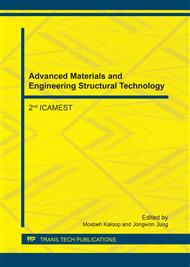p.157
p.162
p.167
p.173
p.179
p.184
p.192
p.202
p.206
Analysis of Overall Heat Transfer Coefficient of Composite Panels for Thermal Insulation
Abstract:
Heat infiltration through the external wall of refrigerated vehicles has been a concern to food industries considering high thermal load required to sustain unbroken cold chain. In this research, experiments were carried out with known fibres contents laid out at various orientations and the effect on the heat transfer measured. The results indicate that the estimated overall heat transfer coefficient of the composite reinforced with 10%wt. of fibre at 0o orientation (G10E) offers the lowest U value of 0.386950 W/m2K and 0.196680 W/m2K for 50 mm and 100 mm insulation thicknesses respectively. The effect of fiber orientation in the composite panel in energy saving was to a large extent minimal when compared to the un-oriented composite panel
Info:
Periodical:
Pages:
179-183
Citation:
Online since:
April 2017
Authors:
Price:
Сopyright:
© 2017 Trans Tech Publications Ltd. All Rights Reserved
Share:
Citation:


